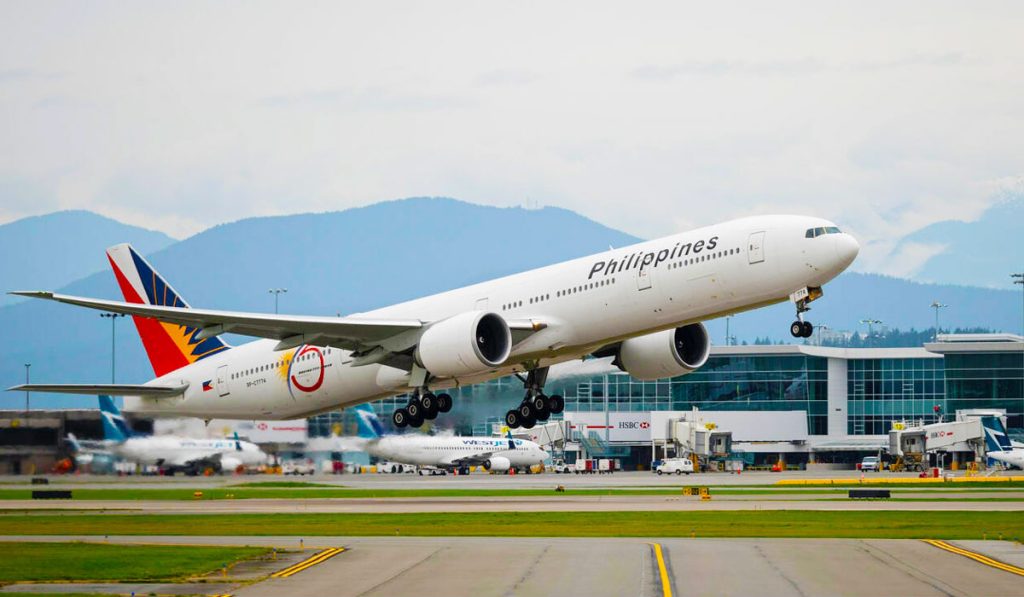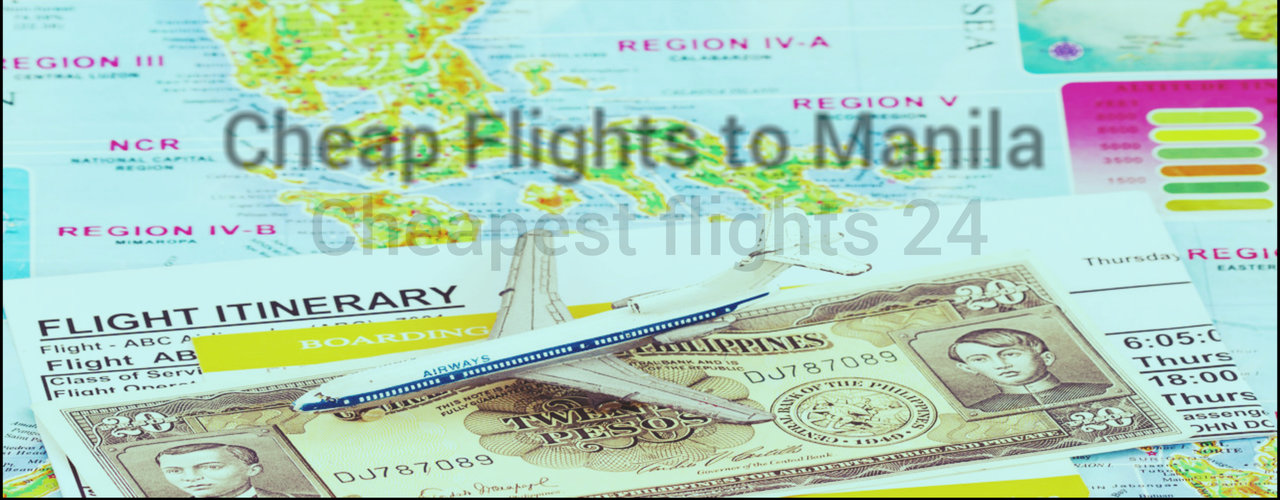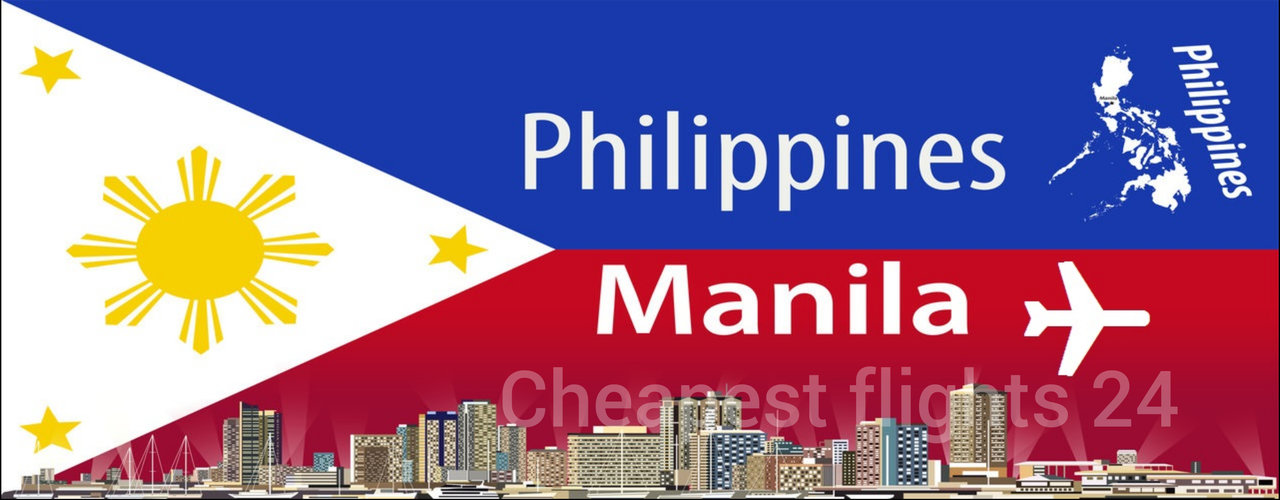
The Philippines, an archipelago of over 7,000 islands, is a mosaic of breathtaking natural beauty, vibrant culture, and unparalleled hospitality. From the pristine white sands of Boracay to the dramatic limestone karsts of Palawan, and the ancient rice terraces of Ifugao, it’s a destination that consistently tops travel wish lists. Yet, for many, the dream of experiencing this tropical paradise is often overshadowed by the perceived high cost of long-haul flights. The good news? With strategic planning and a bit of flexibility, cheap flights to the Philippines are not just a possibility, but a tangible reality. This comprehensive guide will equip you with the knowledge to navigate the skies affordably, delve into the nation’s captivating history and top attractions, and provide essential tips for a seamless and unforgettable journey.
The Quest for Cheap Flights: Your Gateway to Paradise
Finding affordable airfare to the Philippines hinges on a few key strategies that empower you to outsmart fluctuating prices. The primary international gateways are Ninoy Aquino International Airport (MNL) in Manila, Mactan-Cebu International Airport (CEB) in Cebu, and Clark International Airport (CRK) north of Manila. While MNL is the most common entry point, exploring flights into CEB or CRK can sometimes yield better deals, especially if your ultimate destination is in the Visayas or northern Luzon, respectively.

Related Articles about The Pearl of the Orient Beckons: Unlocking Affordable Flights to the Philippines:
- Cairo: A Timeless Tapestry of Ancient Wonders and Modern Marvels
- Unveiling the Vibrant Soul: A Comprehensive Guide to Ho Chi Minh City
- Kazakhstan: Unveiling the Heart of Central Asia
- Paradise Found: Your Ultimate Guide to the Best Hotels and Experiences in the Maldives
- The Grand Tour: Your Ultimate Guide to Experiencing London
Flexibility is Your Best Friend: The golden rule of cheap flights is flexibility. If your travel dates are not set in stone, you can significantly reduce costs. Flying mid-week (Tuesday to Thursday) is often cheaper than weekend travel. Similarly, avoiding peak seasons like Christmas, New Year, Easter, and major summer holidays can lead to substantial savings. Consider traveling during the shoulder seasons (May, early June, and November) or even the low season (July to October), when prices dip, and crowds thin out. While the low season is technically the wet season, many days still offer glorious sunshine, and the rain often comes in short, intense bursts.
Timing Your Purchase: As a general rule, booking international flights 2-4 months in advance tends to offer the sweet spot between availability and price. However, prices can fluctuate wildly, so it’s crucial to monitor them. Setting up price alerts on flight comparison websites like Skyscanner, Google Flights, Kayak, and Momondo can notify you when fares drop for your desired route. Always search for flights in incognito mode or clear your browser cookies, as travel sites have been known to track your searches and potentially increase prices on subsequent visits.
Leveraging Budget Airlines and Layover Strategies: While direct flights offer convenience, they often come at a premium. Don’t shy away from connecting flights, especially those that route you through major Asian hubs like Singapore (SIN), Kuala Lumpur (KUL), Bangkok (BKK), or Hong Kong (HKG). From these cities, numerous budget carriers such as Scoot, AirAsia, Cebu Pacific, and Philippine Airlines offer incredibly competitive fares to various Philippine destinations. Sometimes, booking two separate tickets – one to an Asian hub and another from the hub to the Philippines – can be cheaper than a single through-ticket. Just ensure you allow ample layover time (at least 3-4 hours) for potential delays and immigration/baggage re-check.
Even legacy carriers like Emirates, Qatar Airways, EVA Air, and Korean Air frequently offer promotional fares to the Philippines, especially during off-peak periods. Subscribing to their newsletters and following their social media pages can keep you abreast of flash sales.
Unveiling the Philippines: Top Attractions
Once you’ve secured your affordable flight, a world of wonder awaits. The Philippines boasts an incredible array of attractions that cater to every type of traveler.
Natural Wonders:
- Palawan (El Nido & Coron): Often hailed as the "Last Frontier," Palawan is a jewel box of towering limestone karsts, emerald lagoons, hidden beaches, and vibrant coral reefs. Island-hopping tours in El Nido and Coron reveal breathtaking landscapes perfect for snorkeling, diving, and kayaking.
- Boracay: After a period of rehabilitation, Boracay’s iconic White Beach has reclaimed its pristine beauty. Its powdery sand and stunning sunsets make it a perennial favorite for relaxation and vibrant nightlife.
- Banaue Rice Terraces (Ifugao): Dubbed the "Eighth Wonder of the World," these 2,000-year-old terraces were carved into the mountains by the indigenous Ifugao people, showcasing an incredible feat of ancient engineering and a testament to human ingenuity.
- Chocolate Hills (Bohol): Over 1,268 perfectly cone-shaped hills turn a distinct chocolate brown during the dry season, creating a surreal and mesmerizing landscape. Nearby, you can encounter the tiny, adorable Philippine Tarsiers, one of the world’s smallest primates.
- Siargao: Known as the "Surfing Capital of the Philippines," Siargao attracts surfers globally with its legendary Cloud 9 wave. Beyond surfing, the island offers stunning rock pools, lagoons, and a laid-back island vibe.
- Mayon Volcano (Bicol): Renowned for its almost perfect cone shape, Mayon Volcano is an active stratovolcano that dominates the landscape of Albay province. Its majestic presence is a sight to behold, offering opportunities for ATV tours around its base.

Cultural & Historical Sites:
- Intramuros (Manila): Step back in time within the "Walled City" of Intramuros. Built by the Spanish in the 16th century, it houses historical landmarks like Fort Santiago, San Agustin Church (a UNESCO World Heritage site), and beautifully preserved colonial architecture.
- Cebu City: The "Queen City of the South" is a blend of history and modernity. Visit Magellan’s Cross, the Basilica del Santo Niño (housing a revered statue of the Child Jesus), and explore the bustling carbon market for a taste of local life.
A Glimpse into Philippine History
The Philippines’ rich and complex history is etched into its landscapes, its people, and its vibrant culture. Before the arrival of Europeans, the archipelago was home to diverse indigenous kingdoms and sultanates, engaged in extensive trade with China, India, and Southeast Asian neighbors. Evidence of these early civilizations can be seen in artifacts, ancient scripts, and traditional practices.
The year 1521 marked a pivotal moment with the arrival of Ferdinand Magellan, initiating the Spanish Colonial Period that would last over 300 years. This era introduced Catholicism, which profoundly shaped the nation’s spiritual and social fabric, and saw the establishment of the Galleon Trade, connecting Asia with the Americas via Manila. Despite Spanish rule, numerous revolts showcased the Filipino people’s enduring spirit of resistance.
In 1898, after the Spanish-American War, the Philippines transitioned into the American Colonial Period. This era brought significant changes, including the introduction of a public education system, American legal frameworks, and democratic institutions. While fostering a sense of national identity, it also ignited further struggles for complete independence. The devastating Japanese Occupation during World War II was a period of immense suffering and heroism.
Finally, on July 4, 1946, the Philippines gained its full independence, becoming a republic. The post-independence years have been a journey of nation-building, facing challenges from political instability to economic development, but always marked by the resilience and warmth of its people. Understanding this history enriches any visit, revealing the layers of influence that have sculpted the modern Filipino identity.
Navigating the Islands: Essential Travel Tips
Embarking on an adventure to the Philippines is an exciting prospect, and a few practical tips can ensure a smoother journey.
- Visa Requirements: Most nationalities, including those from the US, Canada, UK, Australia, and EU countries, can enter the Philippines visa-free for up to 30 days. Always check the latest visa policies for your specific nationality before traveling.
- Currency: The local currency is the Philippine Peso (PHP). ATMs are widely available in cities and major tourist areas. It’s advisable to carry some smaller denominations for local transport and markets. Credit cards are accepted in most hotels and larger establishments.
- Language: Filipino (based on Tagalog) is the national language, but English is widely spoken, especially in urban areas and tourist destinations, making communication relatively easy for international travelers.
- Safety: The Philippines is generally safe for tourists, but like any destination, exercising common sense is crucial. Be aware of your surroundings, especially in crowded areas, and keep valuables secure. Monitor local news for any travel advisories, particularly concerning natural disasters like typhoons or earthquakes, which can occur during certain seasons.
- Health: Consult your doctor about recommended vaccinations (routine, Hepatitis A & B, Typhoid are often suggested). Pack a basic first-aid kit. Dengue fever is present, so use mosquito repellent, especially during dawn and dusk. Travel insurance is highly recommended.
- Connectivity: Local SIM cards (Globe and Smart are the main providers) are readily available at airports and convenience stores, offering affordable data packages for staying connected.
- Local Etiquette: Filipinos are renowned for their hospitality. A polite "po" and "opo" (terms of respect) when addressing elders or those in authority are greatly appreciated. A warm smile goes a long way.
Rest Your Head: Accommodation Options
The Philippines offers a diverse range of accommodation to suit every budget and preference, from basic hostels to luxurious resorts.
- Budget-Friendly: For backpackers and budget travelers, hostels, guesthouses, and homestays are plentiful and incredibly affordable, often costing as little as $10-25 per night for a dorm bed or a private room. Websites like Booking.com, Agoda, and Airbnb are excellent for finding these gems.
- Mid-Range: You’ll find a wide selection of comfortable hotels and boutique resorts in the $30-100 per night range. These often come with amenities like air conditioning, private bathrooms, and sometimes a pool or breakfast included.
- Luxury: In popular destinations like El Nido, Boracay, and some parts of Cebu, high-end resorts offer world-class service, stunning locations, and extensive facilities, with prices ranging from $150 upwards.
- Booking in Advance: While walk-ins are possible in less popular areas, it’s always wise to book accommodation in advance, especially during peak season or for highly sought-after locations like El Nido or Boracay.
Getting Around: Transportation in the Philippines
Navigating the archipelago is part of the adventure, with a mix of inter-island and local transport options.
- Inter-Island Travel:
- Flights: The quickest way to hop between major islands. Local airlines like Cebu Pacific, AirAsia Philippines, and Philippine Airlines offer extensive domestic networks with frequent and often affordable flights.
- Ferries: A slower but more scenic and often cheaper alternative for inter-island travel. Various ferry companies operate routes between major ports, offering different classes of service.
- Within Cities and Towns:
- Jeepneys: The iconic, colorful, and highly decorated jeepneys are a quintessential Filipino experience. They operate on fixed routes, are incredibly cheap, and are a great way to mingle with locals.
- Tricycles: A motorcycle with a sidecar, tricycles are ubiquitous in smaller towns and for short-distance travel. Negotiate the fare beforehand.
- Taxis/Ride-sharing (Grab): In major cities like Manila and Cebu, metered taxis are available. Ride-sharing apps like Grab (Southeast Asia’s equivalent of Uber) offer convenience and transparent pricing.
- Buses/Vans: For longer land journeys between provinces or within larger islands, air-conditioned buses and shared vans are reliable and economical options.
- Rental Cars: While available, self-driving is not always recommended for tourists due to challenging traffic, varying road conditions, and navigating unfamiliar routes. Hiring a car with a driver is often a more relaxing alternative.
The Perfect Time to Visit
Choosing the right time to visit the Philippines can significantly impact your experience.
- Dry Season (November to May): This is generally considered the best time to visit, with sunny skies, lower humidity, and calm seas, ideal for beach activities, island hopping, and exploring. The peak tourist months are December to February, when temperatures are cooler and more comfortable. Expect higher prices and larger crowds during this period.
- Wet Season (June to October): Characterized by higher rainfall and humidity, and the possibility of typhoons, particularly from July to September. However, travel during this season offers advantages: fewer tourists, greener landscapes, and significantly lower prices for flights and accommodation. While rain showers can be intense, they often clear up, leaving plenty of sunshine. It’s still possible to have a fantastic trip if you’re flexible and prepared for potential weather disruptions.
Your Affordable Adventure Awaits
The dream of exploring the Philippines is more accessible than ever. By employing smart strategies for finding cheap flights, embracing the adventure of local transport, and knowing the best times to visit, you can unlock an unforgettable journey to this mesmerising archipelago. From diving into crystal-clear waters to immersing yourself in ancient history and experiencing the warmth of Filipino hospitality, the Pearl of the Orient awaits your discovery – and it doesn’t have to break the bank. Start planning your affordable adventure today, and prepare to be captivated by the magic of the Philippines.





